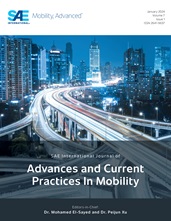Aerodynamic technologies for light-duty vehicles were evaluated through full-scale testing in a large low-blockage closed-circuit wind tunnel equipped with a rolling road, wheel rollers, boundary-layer suction and a system to generate road-representative turbulent flow. This work was part of a multi-year, multi-vehicle study commissioned by Transport Canada and Environment and Climate Change Canada, and carried out in cooperation with the US EPA, to support the evaluation of light-duty-vehicle greenhouse-gas-emission regulations. A 2016 paper reported drag-reduction measurements for technologies such as active grille shutters, production and custom underbody treatments, air dams, ride height control and combinations of these. This paper describes an extension to that work and addresses vehicle aerodynamics in three ways. First, whole vehicle body-shaping changes were evaluated by adding older or newer generation models, representing distinct body style redesigns, of select vehicles of different classes from the 2016 study. Second, newer vehicles were added to represent the market application of advanced aerodynamics in terms of body shaping and drag-reduction technologies. Third, drag reduction over a range of yaw angles is reported for new technologies such as side-mirror removal (for replacement with camera systems) and air curtains. This paper focuses specifically on drag measurements, complementing a 2019 paper which focused on relating mean surface, wake and underbody pressure measurements to aerodynamic drag for a selection of the test vehicles.
The most effective redesign of a vehicle was found to reduce the wind-averaged drag area by 9% compared to the previous model. The best commercial or idealized applications of the top performing technologies, namely ride height control, underbody panels and active grille shutters, provided wind-averaged drag area reductions in the 6% to 8% range. Idealized technologies performed better than their commercial counterparts. The best applications of other technologies like side mirror removal and OEM air dams were in the range of 3% to 5% reduction in wind-averaged drag area. All OEM air curtains performed better when combined with ride height reduction but still only reduced wind-averaged drag area by around 1% in the best case. The complete range of results, yaw effects and comparison with previously published results are presented and discussed in this paper.
